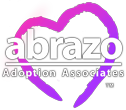Baby adoption is getting harder to do in America– whether or not adoption professionals want to admit it to prospective adoptive parents.
It’s no secret that adoption wait times are getting longer, while the number of available infants in America drops each year.
This would initially seem like a good thing, given the old saying that “the very best of social workers work themselves out of a job.” And it might be, if it meant that the numbers of children in state care were dropping, too. (But… no. Texas foster care statistics are staggering. )
According to a recent email from CAIRS Solutions, there are over a million prospective adoptive parents trying to adopt in the US each year. Yet only 18k placements occur annually, meaning that only 1.8% of adoptive hopefuls will succeed at adopting children– of any age.
So let’s look at what’s making infant adoption so much more difficult?
Why Baby Adoption is Getting Harder
First of all, the birth rate in America is lower than it’s been in decades. Teen pregnancies have fallen, which surely is a good thing. Yet the global drop in fertility may have troubling repercussions worldwide.
In America, there’s little social expectation that children need two parents anymore (although research indicates most kids do still benefit from growing up with parents of both genders.) Any stigma attached to being a “single mom” has largely disappeared, even as the burdens of single parenting have grown. (If anything, the stigma of being a responsible birthparent has increased. Pro-life rhetoric still doesn’t generate pro-birthmother affirmation.)
Nationwide, infertility seem to have risen as birth rates have fallen. This, coupled with plummeting international adoption numbers and more gay couples seeking to adopt, means more Americans than ever compete for a shrinking number of available adoption opportunities each year.
Finally: government stimulus money is typically awarded to lower-income families based on size. That, combined with the widely available pandemic assistance (free food, rent and utility moratoriums, etc.), primarily profits parents who don’t place (whether or not they should.) There are still plenty of children in state foster care free to be adopted, of course. Yet most prospective adopters hope to adopt only newborns and babies. The average wait time for baby adoption is doubling (or tripling) in most parts of the country, so ethical agencies are accepting less applicants, flooding the independent adoption market with poorly-prepared candidates willing to bend any rules to get what they want.
And Now, Some Words of Advice
We know that prospective adopters want to be encouraged, not discouraged. (That’s how national baby brokers with million-dollar ad budgets keep eager wannabes paying them big bucks.) At Abrazo, we believe in shooting straight with folks, though, whether they’re adopting or placing. We’ve done it for nearly three decades now, and it’s served us (and our clients) well over the years.
So, yes: baby adoption is getting harder, but it doesn’t mean there aren’t still babies to adopt. It does mean that prospective adopters and their adoption professionals have to work harder at finding the birthparents and babies who need them most. (But no, we’re not about to spill all our best proprietary pointers here, sorry.) The advice we will offer is this, though:
* Expand your expectations. The child you truly need most may look least like the infant you think you want. But a little education can go a long way. Learn all you can about the needs of children who really are in need of loving homes. (Like NAS babies, second chance adoptions, and the kids of the Heart Gallery.)
* Extend your outreach. The average parent considering placing isn’t a “high school girl in trouble” who slinks into an adoption agency in shame anymore. And she’s not likely to hand her baby willingly to strangers (nor should she.) So fully prepare yourself for open adoption, and then keep those promises. (Forever.)
* Expect bumps in the road– and learn from them. Falling numbers of placement opportunities are also increasing the number of adoption scams, as con artists exploit the dreams of gullible adoption hopefuls. Qualified adoption professionals know what to watch out for, but DIYers likely don’t. Trust licensed adoption agencies that have been around; while we don’t just tell folks what they want to hear, we do work really hard to get them to where they want to be.
The baby boom adoption era is long gone, and that is a good thing. Adoption was never meant to be “easy.” And baby adoption is getting harder to do, that’s true. Yet the need for loving homes for children truly in need isn’t going away. And the families who appreciate this truth are surely those best qualified to adopt, anywhere.


